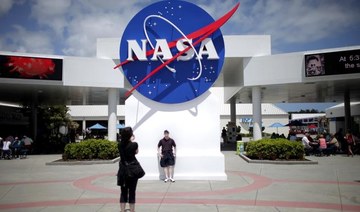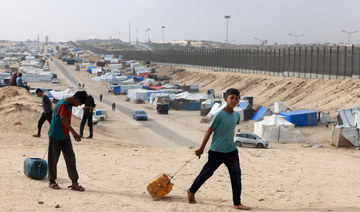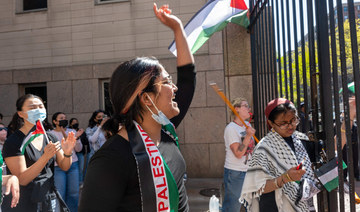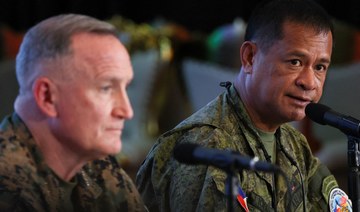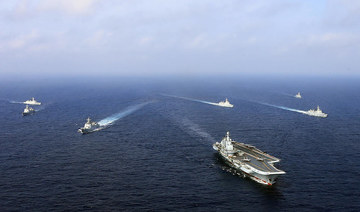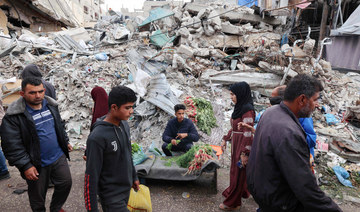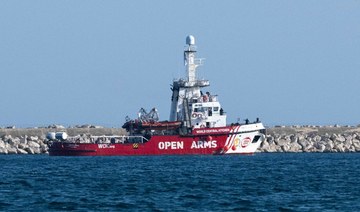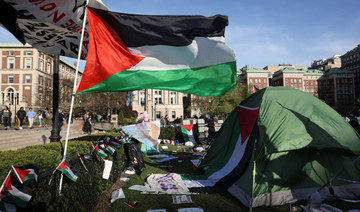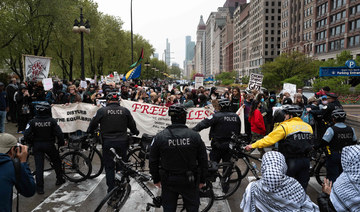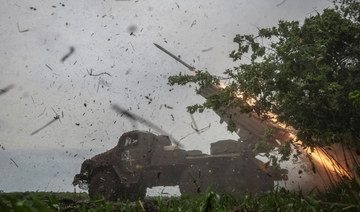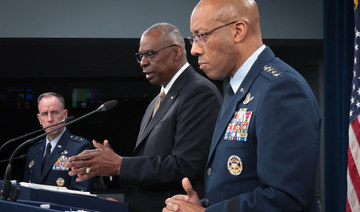Our view of the universe just expanded: The first image from NASA’s new space telescope unveiled Monday is brimming with galaxies and offers the deepest look of the cosmos ever captured.
The first image from the $10 billion James Webb Space Telescope is the farthest humanity has ever seen in both time and distance, closer to the dawn of time and the edge of the universe. That image will be followed Tuesday by the release of four more galactic beauty shots from the telescope’s initial outward gazes.
The “deep field” image released at a White House event is filled with lots of stars, with massive galaxies in the foreground and faint and extremely distant galaxies peeking through here and there. Part of the image is light from not too long after the Big Bang, which was 13.8 billion years ago.
“We’re going to give humanity a new view of the cosmos,” NASA Administrator Bill Nelson told reporters last month in a briefing. “And it’s a view that we’ve never seen before.”
The images on tap for Tuesday include a view of a giant gaseous planet outside our solar system, two images of a nebula where stars are born and die in spectacular beauty and an update of a classic image of five tightly clustered galaxies that dance around each other.
The world’s biggest and most powerful space telescope rocketed away last December from French Guiana in South America. It reached its lookout point 1 million miles (1.6 million kilometers) from Earth in January. Then the lengthy process began to align the mirrors, get the infrared detectors cold enough to operate and calibrate the science instruments, all protected by a sunshade the size of a tennis court that keeps the telescope cool.
The plan is to use the telescope to peer back so far that scientists will get a glimpse of the early days of the universe about 13.7 billion years ago and zoom in on closer cosmic objects, even our own solar system, with sharper focus.
Webb is considered the successor to the highly successful, but aging Hubble Space Telescope. Hubble has stared as far back as 13.4 billion years. It found the light wave signature of an extremely bright galaxy in 2016. Astronomers measure how far back they look in light-years with one light-year being 5.8 trillion miles (9.3 trillion kilometers).
“Webb can see backwards in time to just after the Big Bang by looking for galaxies that are so far away that the light has taken many billions of years to get from those galaxies to our telescopes,” said Jonathan Gardner, Webb’s deputy project scientist said during the media briefing.
How far back did that first image look? Over the next few days, astronomers will do intricate calculations to figure out just how old those galaxies are, project scientist Klaus Pontoppidan said last month.
The deepest view of the cosmos “is not a record that will stand for very long,” Pontoppidan said, since scientists are expected to use the telescope to go even deeper.
Thomas Zurbuchen, NASA’s science mission chief said when he saw the images he got emotional and so did his colleagues: “It’s really hard to not look at the universe in new light and not just have a moment that is deeply personal.”
At 21 feet (6.4 meters), Webb’s gold-plated, flower-shaped mirror is the biggest and most sensitive ever sent into space. It’s comprised of 18 segments, one of which was smacked by a bigger than anticipated micrometeoroid in May. Four previous micrometeoroid strikes to the mirror were smaller. Despite the impacts, the telescope has continued to exceed mission requirements, with barely any data loss, according to NASA.
NASA is collaborating on Webb with the European and Canadian space agencies.
“I’m now really excited as this dramatic progress augurs well for reaching the ultimate prize for many astronomers like myself: pinpointing “Cosmic Dawn” — the moment when the universe was first bathed in starlight,” Richard Ellis, professor of astrophysics at University College London, said via email.
Far out: NASA space telescope’s 1st cosmic view goes deep
https://arab.news/2dk54
Far out: NASA space telescope’s 1st cosmic view goes deep
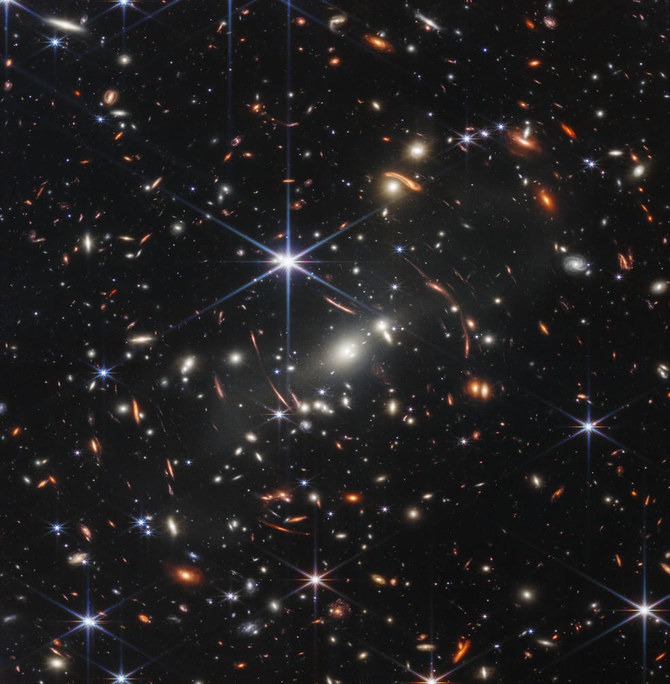
Pro-Palestinian protests keep roiling US college campuses
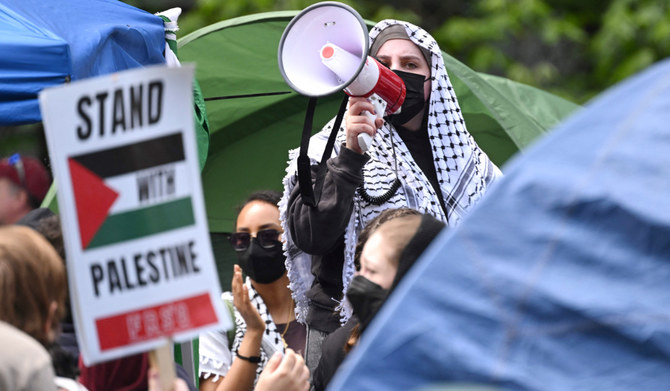
- Israel has killed more than 34,000 Palestinians, according to Gaza’s Health Ministry
- “They were expecting about 65,000 people on campus, and they just did not feel that it was going to be safe,” Bass said on CNN’s “State of the Union”
WASHINGTON: Pro-Palestinian protests at US universities showed no sign of slowing as they spread coast-to-coast over the weekend and police crackdowns and arrests continued into another week while students vowed to stay in tent encampments until their demands are met.
The students’ demands range from a ceasefire in Israel’s war with Hamas to calls for universities to stop investing in Israeli enterprises involved with the country’s military to an end for US military assistance for Israel.
Pro-Palestinian protests have spread to college campuses across the US, stoked by the mass arrest of over 100 people on Columbia University’s campus more than a week ago.
The Columbia campus was peaceful on Saturday and there were no reports of arrests of disturbances overnight, a school spokesman told Reuters.
But crackdowns continued at a handful of campuses on Saturday including a lockdown at the University of Southern California (USC) and a heavy police presence. More than 200 people were arrested at a handful of schools including 80 late on Saturday at Washington University in St. Louis. Among those arrested at Washington University was 2024 Green Party presidential candidate Jill Stein.
“They are sending in the riot police and basically creating a riot in an otherwise peaceful demonstration. So this is just shameful,” Stein said in a statement.
Washington University said in a statement that those arrested would be charged with trespassing.
On Sunday, dueling demonstrations were set to begin at the University of Southern California, Los Angeles. Outside groups were planning to demonstrate in favor of and against the pro-Palestinian encampments.
Members of the Harriet Tubman Center for Social Justice planned to support students’ right to protest.
In opposition, however, a group called Stand With Us will hold a “Stand in Support of Jewish Students” rally to “stand up against hatred and antisemitism.”
The nationwide protests have caught the attention of President Joe Biden.
White House national security spokesman John Kirby told ABC News on Sunday that the president knows there are very strong feelings about the war in Gaza.
“He understands that, he respects that and as he has said many times, we certainly respect the right of peaceful protest,” Kirby said. “People should have the ability to air their views and to share their perspectives publicly, but it has to be peaceful.”
Kirby added that the president condemns antisemitism and condemns hate speech.
At USC, leadership has canceled the main commencement ceremony after it called off the valedictorian speech by a Muslim student who said she was silenced by anti-Palestinian hatred.
Los Angeles Mayor Karen Bass said on Sunday she believed that canceling the commencement was a decision “they had to make.”
“They were expecting about 65,000 people on campus, and they just did not feel that it was going to be safe,” Bass said on CNN’s “State of the Union.”
China confronts Japanese politicians in disputed East China Sea area
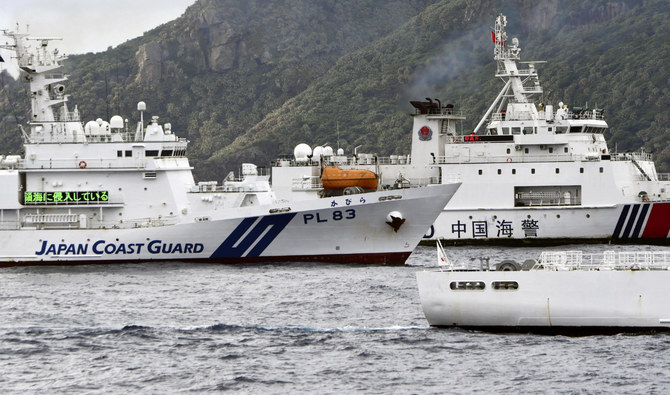
BEIJING/TOKYO: China’s coast guard confronted Japanese lawmakers in waters claimed by both countries in the East China Sea, China’s embassy in Tokyo and Japanese media said on Sunday, the latest in a series of maritime disputes involving China and its neighbors.
Chinese vessels took unspecified law enforcement measures, the embassy said in a statement, adding that it had lodged solemn representations for what it called “infringement and provocation” by Japan near tiny, uninhabited islands that Beijing calls the Diaoyu and Tokyo calls the Senkaku.
The Japanese group, including former Defense Minister Tomomi Inada, was on an inspection mission organized by the city of Ishigaki in Okinawa prefecture, according to the Chinese Embassy and Japanese public broadcaster NHK.
Japan and China have repeatedly faced off around the Japan-administered islands. China also has escalating run-ins with the Philippine navy in disputed areas of the South China Sea, where Beijing’s expansive maritime claims conflict with those of a number of Southeast Asia nations.
Inada’s group spent three hours near the islands on Saturday, using drones to observe the area, and the Japanese coast guard vessel sought to fend off the Chinese coast guard, NHK said.
“The government and the public are aware of the severe security situation,” said Inada, a senior official of the ruling Liberal Democratic Party, according to NHK. “The Senkaku are our sovereign territory and we need to go ashore for research.”
It was the first such inspection trip to the area involving a member of Japan’s parliament since 2013, NHK reported.
Officials of Japan’s foreign ministry were not immediately available for comment outside of working hours.
China strongly urged Japan to abide by what it called a consensus reached between the two countries, stop political provocations, on-site incidents and hyping up public opinion, the embassy said.
It asked Japan to “return to the right track of properly managing contradictions and differences through dialogue and consultation, so as to avoid further escalation of the situation.”
World Central Kitchen to resume Gaza aid after staff deaths in Israeli strike
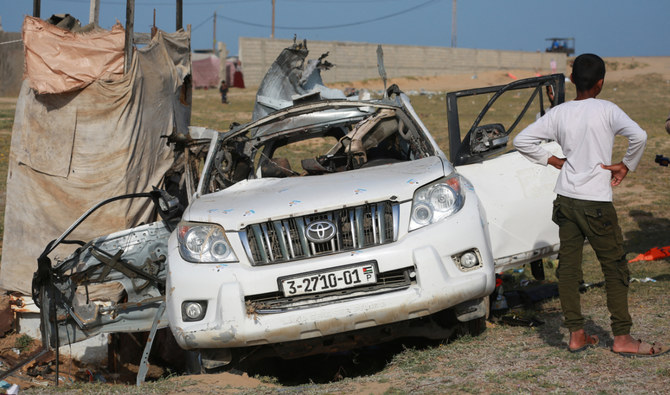
NICOSIA: World Central Kitchen or WCK said it would resume operations in the Gaza Strip on Monday, a month after seven workers of the US-based charity were killed in an Israeli air strike. Prior to halting operations, WCK had distributed more than 43 million meals in Gaza since October, representing by its own accounts 62 percent of all international NGO aid.
The charity said it had 276 trucks with the equivalent of almost 8 million meals ready to enter through the Rafah Crossing and will also send trucks into Gaza from Jordan.
“The humanitarian situation in Gaza remains dire,” said the charity’s chief executive officer Erin Gore.
“We are restarting our operation with the same energy, dignity, and focus on feeding as many people as possible.”
The April 1 deaths triggered widespread condemnation and demands from Israel’s allies, including the US, for an explanation.
Israel said its inquiries had found serious errors and breaches of procedure by its military, dismissing two senior officers and reprimanding senior commanders.
WCK is demanding an independent investigation. Israel’s six-month war against Hamas in Gaza followed an Oct. 7 attack by the militant group in southern Israel when more than 250 hostages were seized and some 1,200 people killed, according to Israeli tallies. Israel’s offensive has killed more than 34,000 people, Palestinian health authorities say, and caused a humanitarian disaster for the enclave’s more than 2 million inhabitants.
“We have been forced to make a decision: Stop feeding altogether during one of the worst hunger crises ever ... Or keep feeding knowing that aid, aid workers and civilians are being intimidated and killed,” Gore said.
“These are the hardest conversations, and we have considered all perspectives when deliberating. Ultimately, we decided we must keep feeding, continuing our mission of showing up to provide food to people during the toughest of times.” (Writing by Michele Kambas; Editing by Andrew Cawthorne)
White House urges ‘peaceful’ campus protests after hundreds arrested
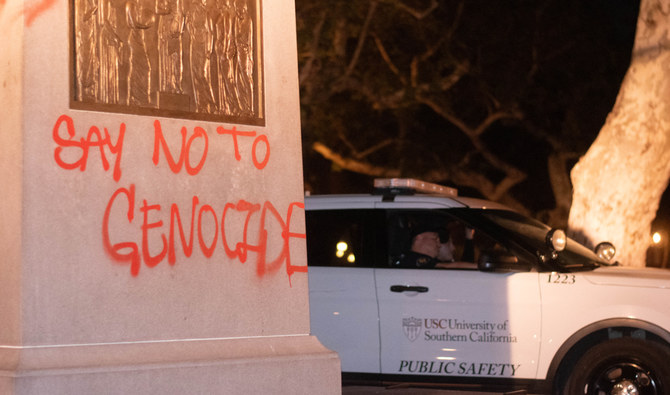
WASHINGTON: The White House insisted on Sunday that pro-Palestinian protests that have rocked US universities in recent weeks must remain peaceful, after police arrested around 275 people on four separate campuses over the weekend.
“We certainly respect the right of peaceful protests,” National Security Council spokesman John Kirby told ABC’s “This Week.”
But, he added: “We condemn the anti-Semitism language that we’ve heard of late and certainly condemn all the hate speech and the threats of violence out there.”
The demonstrations began at Columbia University in New York, but they have since spread rapidly across the country.
While peace has prevailed on many campuses, the number of protesters detained — at times by police in riot gear using chemical irritants and tasers — is rising fast.
They include 100 at Northeastern University in Boston, 80 at Washington University in St. Louis, 72 at Arizona State University, and 23 at Indiana University.
Among those arrested at Washington University was Green Party presidential candidate Jill Stein, who faulted police for aggressive tactics she said provoked the sort of trouble they are meant to quell.
“This is about freedom of speech ... on a very critical issue,” she told CNN shortly before her arrest on Saturday.
“And there they are, sending in the police and creating a riot.”
College administrators have struggled to find the best response, caught between the need to respect free-speech rights and the imperative of containing inflammatory and sometimes violently anti-Semitic calls by protesters.
At the University o Southern California, school officials late on Saturday closed the main campus to the public after pro-Palestinian groups again set up an encampment that had been cleared earlier, the school announced on X.
With final exams coming in the next few weeks, some campuses — including the Humboldt campus of California State Polytechnic University, have closed and instructed students to complete their classes online.
The activists behind the campus protests — not all of them students — are calling for a ceasefire in Israel’s war with Hamas and want colleges to sever ties with Israel.
Ukraine warns front ‘worsened’ as Russia claims fresh gains
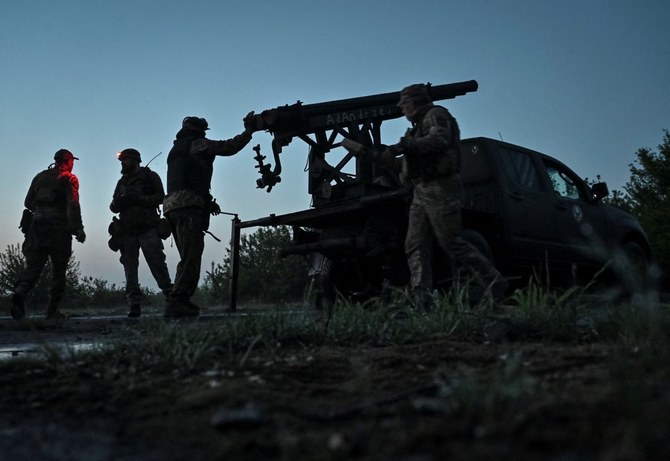
- Russia’s troops are advancing in the eastern Donetsk region
- The US finally approved a $61 billion package of financial aid
VOZDVYZHENKA, Ukraine, April 28, 2024 Agence France Presse: Ukraine’s army leader admitted Sunday that Kyiv’s position on the battlefield has worsened after Russian forces captured another village in the east, pressing their advantage in manpower and ammunition.
Russia’s troops are advancing in the eastern Donetsk region as Kyiv awaits the arrival of much-needed US weapons that it hopes will stabilize the fragile front lines.
“The situation at the front has worsened,” Ukrainian commander-in-chief Oleksandr Syrsky said in a Facebook post Sunday.
Ukrainian troops had “retreated” westwards to new defensive lines in a section of the front that runs past the city of Donetsk, controlled by pro-Russian forces since 2014.
Russia has “a significant advantage in forces and means” and had been able to notch up advances amid “heavy fighting,” Syrsky said.
“In some sectors the enemy had tactical success, and in some areas our troops managed to improve the tactical position,” he added.
Russia’s defense ministry earlier on Sunday claimed its troops had captured the village of Novobakhmutivka in the Donetsk region — around 10 kilometers (six miles) north of Avdiivka, which they seized in February.
The stark assessment of the picture facing Ukrainian troops comes at the end of week of ups and downs for Kyiv.
The United States finally approved a $61 billion package of financial aid after months of political wrangling, unlocking much-needed arms for Ukraine’s stretched troops.
But on the battlefield Russia chalked up more successes.
Its troops managed to make rapid advances in a narrow column to the northwest of Avdiivka.
In the village of Vozdvyzhenka, some eight kilometers from the fighting in Ocheretyne, AFP reporters saw civilians loading a small truck with furniture and belongings on Sunday.
“We’re going a long way from here... I don’t have time to talk because of the shelling,” one of them told AFP, before climbing into the vehicle and speeding out of the village.
Soldiers on the side of a road in the woods said they had originally been sent to build defensive lines.
“But the situation has changed. We were told not to take the shovels but to stay and wait for orders. The Russians are attacking and advancing,” one told AFP, speaking on condition of anonymity.
Syrsky confirmed on Sunday that Russia had made some “tactical” progress in that part of the front, but said Moscow had not yet achieved what he called an “operational advantage.”
He also said additional units were being deployed to replace those that had sustained heavy losses.
The recent setbacks have prompted rare criticism from Ukraine’s military bloggers.
“The (Russian) breakthrough near Ocheretyne revealed a number of problems,” the Deep State Telegram channel, with close links to the Ukrainian army, said in a post on Wednesday.
It said leaders of the 115th mechanized brigade, which is fighting in the area, were “responsible for the collapse of the defense in the entire sector, allowing significant losses.”
Kyiv’s forces are outnumbered across the battlefield, with the country struggling to recruit enough soldiers to replace those who have been killed, wounded or exhausted by the war, now in its third year.
Leaders in Kyiv have warned the military outlook could worsen in the next few weeks, while shipments of US weapons are making their way to the front lines.
“We are still waiting for the supplies promised to Ukraine,” said President Volodymyr Zelensky in his evening address Sunday.
Speaking after talks with Hakeem Jeffries, leader of the Democrats in the US House of Representatives, he said he had once again stressed the urgent need for Patriot anti-missile systems “as soon as possible.”
Ukraine’s head of intelligence at the ministry of defense Kyrylo Budanov said this month that the battlefield situation would likely be at its most difficult in mid-May to early June.



